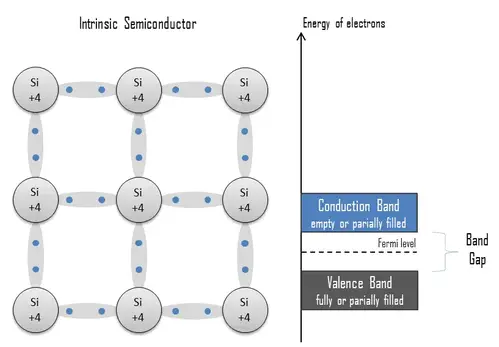Explore the principles of diamagnetism, Langevin’s theory, the governing equation, factors influencing susceptibility, and an example calculation.
Diamagnetism: A Fundamental Magnetic Property
Diamagnetism is a property exhibited by materials that are weakly repelled by a magnetic field. This phenomenon occurs due to the circulation of electrons in the material, which creates an opposing magnetic field. In this article, we will explore the underlying principles and the equation that governs diamagnetism.
Understanding Diamagnetism
All materials possess some magnetic properties, which can be categorized into three main types: diamagnetism, paramagnetism, and ferromagnetism. Diamagnetism is the weakest of these, with materials exhibiting a negative magnetic susceptibility. This means that when exposed to an external magnetic field, these materials will generate an internal magnetic field that opposes the applied field, resulting in a repulsive force.
Langevin’s Theory of Diamagnetism
French physicist Paul Langevin developed a classical theory to describe diamagnetism, which is based on the behavior of electrons in the presence of an external magnetic field. According to Langevin’s theory, the magnetic moment induced in a diamagnetic material is proportional to the applied magnetic field strength (H) and the material’s diamagnetic susceptibility (χd).
- Magnetic Moment: A measure of the strength and direction of the magnetic field produced by a material.
- Magnetic Susceptibility: A dimensionless quantity that characterizes the degree to which a material becomes magnetized when subjected to an external magnetic field.
The equation for the induced magnetic moment in a diamagnetic material is given by:
M = χd * H
Where:
- M is the induced magnetic moment
- χd is the diamagnetic susceptibility
- H is the applied magnetic field strength
Factors Influencing Diamagnetic Susceptibility
The diamagnetic susceptibility of a material depends on its atomic structure and electronic configuration. Generally, materials with completely filled electron shells exhibit stronger diamagnetism. This is because the electrons in these materials are more likely to undergo orbital motion when exposed to a magnetic field, generating an opposing magnetic moment.
Applications and Importance of Diamagnetism
Although diamagnetism is a weak phenomenon, it has several practical applications and plays a crucial role in understanding the magnetic properties of materials. Diamagnetism is used in:
- Levitation experiments, where materials can be suspended in mid-air by exploiting their diamagnetic properties.
- Magnetic separation techniques, where diamagnetic materials can be separated from paramagnetic or ferromagnetic materials based on their magnetic response.
- Studying the electronic structure of materials, as diamagnetic susceptibility is related to the material’s atomic structure and electron configuration.
In conclusion, diamagnetism is a fundamental magnetic property exhibited by all materials to some extent. By understanding the principles behind diamagnetism and the equation that governs it, we can gain valuable insights into the magnetic behavior of various materials and their potential applications.
Example of Diamagnetic Susceptibility Calculation
Let’s consider a simple example to illustrate the calculation of diamagnetic susceptibility for a material. We will use the equation for the induced magnetic moment:
M = χd * H
Suppose we have a diamagnetic material with an induced magnetic moment M of 0.0001 Am² and an applied magnetic field strength H of 1000 A/m. We can calculate the material’s diamagnetic susceptibility χd as follows:
χd = M / H
Substitute the given values:
χd = 0.0001 Am² / 1000 A/m
Calculate the result:
χd ≈ -0.0001
The negative value of χd indicates that the material is indeed diamagnetic, as expected. This example demonstrates how to calculate the diamagnetic susceptibility of a material when the induced magnetic moment and applied magnetic field strength are known.



